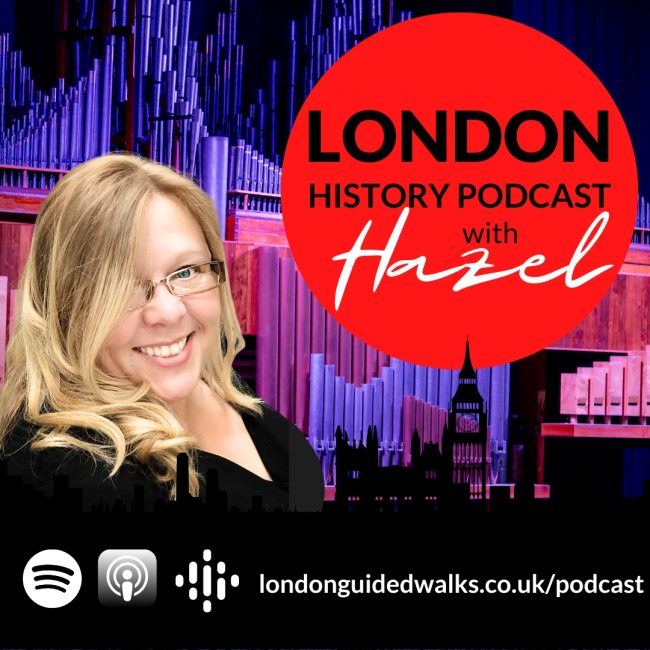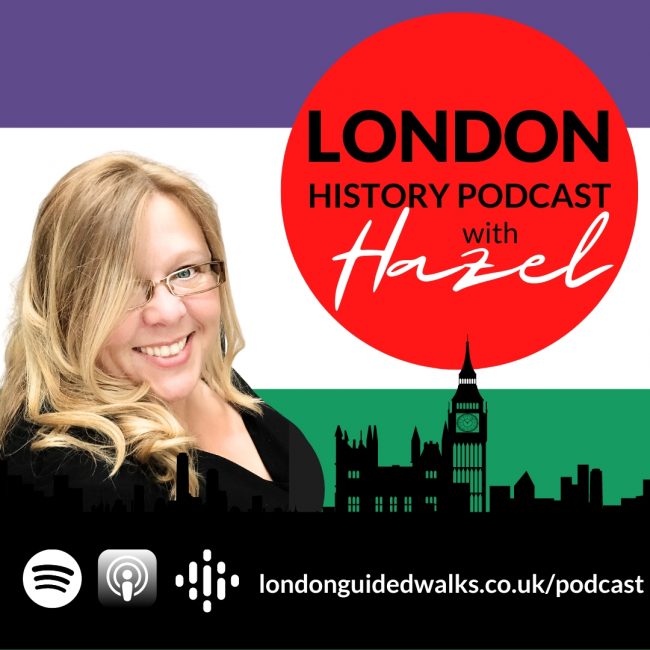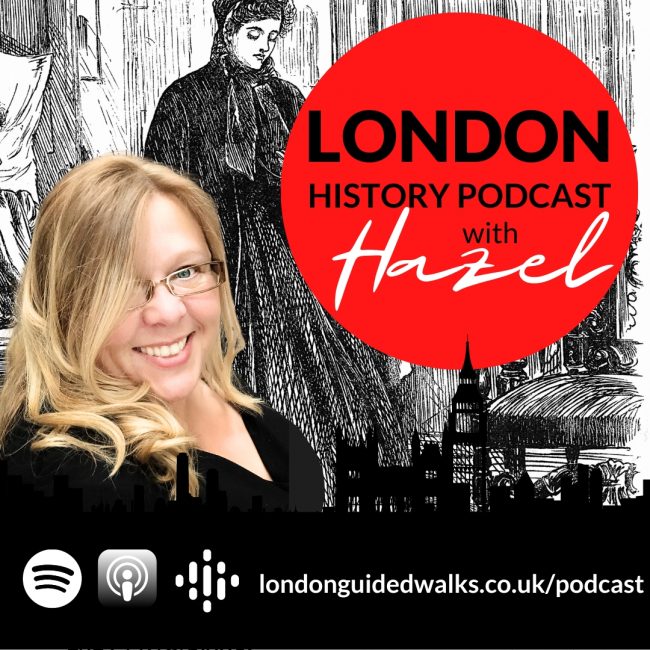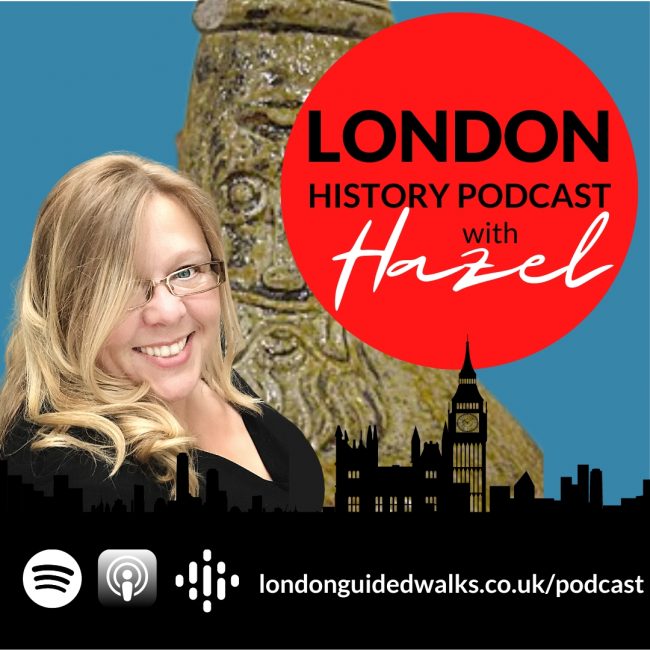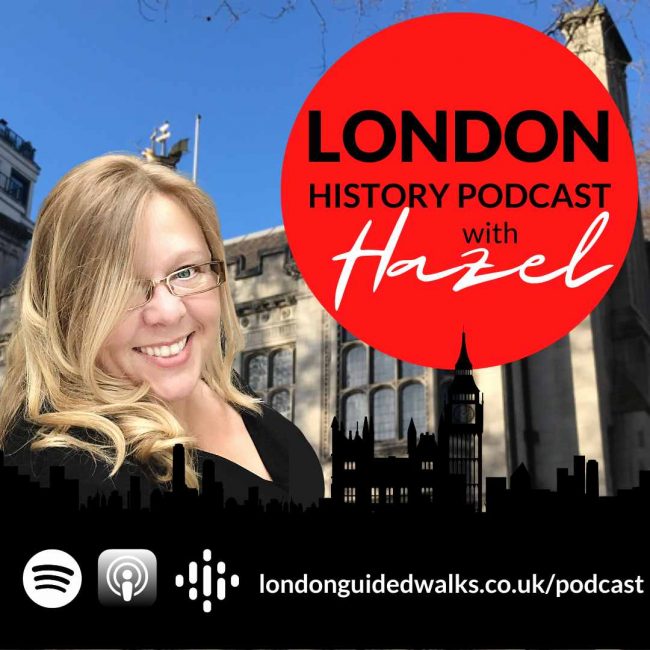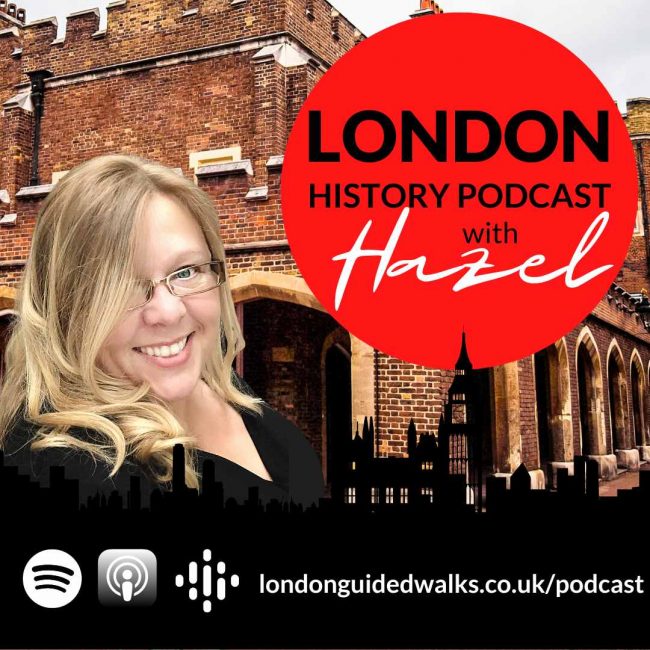Join Hazel Baker and Ian McDiarmid as they revisit the story of how The Great Fire of London began and the aftermath, how it shaped the face of the new City of London
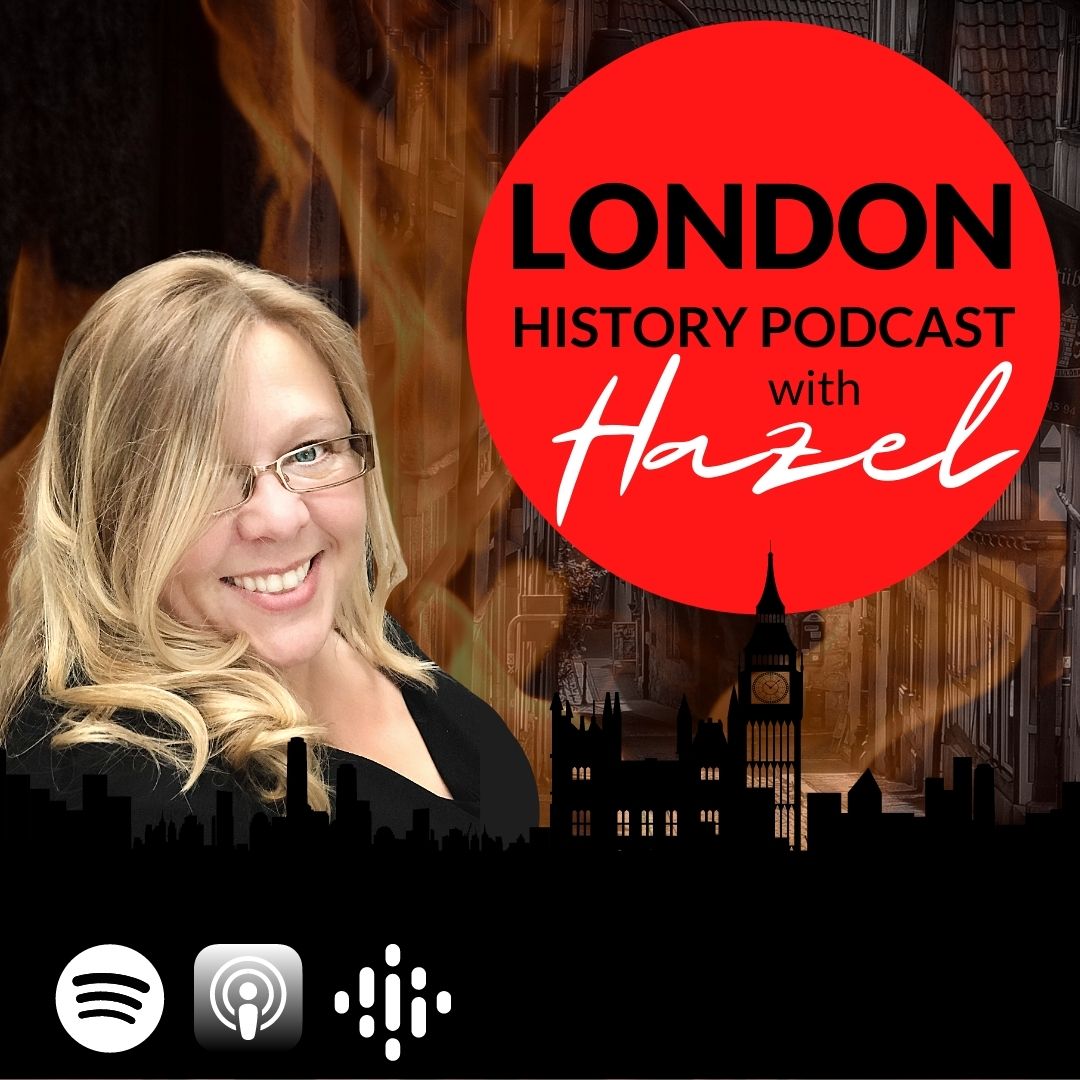
London Guided Walks » Episode 20: The Great Fire of London – How It Began
Episode 20: The Great Fire of London – How It Began
The Great Fire of London – How It Began
Recommended Reading:
- The Great Fire of London: Anniversary Edition of the Great Fire of 1666: 350th Anniversary of the Great Fire of 1666
- The Diary of Samuel Pepys: The Great Plague of London & The Great Fire of London, 1665-1666
- Looking for Old London Bridge
- What is the strange contraption in St Magnus the Martyr church?
Show Notes:
 Hazel Baker: Hello and welcome to London Guided Walks London History podcast. In the coming episodes, we will be sharing our love and passion for London, its people, places and history in an espresso shot with a splash of personality. For those of you who don’t know me, I am Hazel Baker, founder of London Guided Walks, providing guided walks and private tours to Londoners and visitors alike.
Hazel Baker: Hello and welcome to London Guided Walks London History podcast. In the coming episodes, we will be sharing our love and passion for London, its people, places and history in an espresso shot with a splash of personality. For those of you who don’t know me, I am Hazel Baker, founder of London Guided Walks, providing guided walks and private tours to Londoners and visitors alike.
To accompany this podcast. We also have have hundreds of London history related blog posts for you to enjoy absolutely free.
And we’ve been busy this summer. We have launched The Daily London, providing you with daily inspiration for things to do in London. You can listen on iTunes, Spotify, or even add it to your Alexa flash briefings. And also you can check our website, londonguidedwalks.co.uk/flash.
Big news. Our September sale is now on. You can get 20% off any private tour if you book online with us all the way up until the end of September. The date of the tour doesn’t need to be in September, you just need to make the booking in September and use promo code SUMMER2020 to benefit from this amazing deal.
Joining me in the studio today is City of London Tour Guide, Ian McDiarmid. Hello.
 Ian McDiarmid: Hi there.
Ian McDiarmid: Hi there.
Hazel Baker: Thanks for joining us today. It’s the perfect timing kicking off the second lot of episodes for the podcast and it’s September. Which means The Great Fire of London. And you do a Great Fire of London talks so you’re the perfect tour guide to throw a few questions that, our followers have, thrown to me. And I’m just passing the bat over to you. So I might not be so lenient with my questions this time.
Ian McDiarmid: Okay. Fair enough.
Hazel Baker: All right. So the first question that we have is how did The Great Fire of London start?
Ian McDiarmid: Well, we’re talking about a bakery, Thomas Farron’s bakery, which was in Pudding Lane. And on the morning of the 2nd of September, about two o’clock in the morning, 2nd of September 1666, one of the workers in the bakery smells burning.
Now, if you want to get an idea of where this bakery was, it’s quite easy because we’ve got this a big help for guide for us in the form of the monuments. And the monument is just North of London bridge. And if you were to lay the monument on its side, it is 202 feet tall and it’s 202 feet tall because if you were to lay it on its side, it’s end would rest the site of Thomas Farron’s bakery.
So this worker in the bakery smells burning and obviously something has gone horribly wrong because if you’re running a bakery in a city like London, as most cities were largely made of wood, it was crucial that you made sure that the ovens were completely extinguished and something had gone wrong. There was burning. He raises the, household. They realize that the bakery is on fire and they escape. And they escape over the rooftops. Only Thomas Farron’s maid servant, unfortunately is afraid of heights and she never makes it, and she becomes the first victim of the great fire.
Hazel Baker: And you’re saying that the fire needs to be extinguished because this has happened in the middle of the night.
Ian McDiarmid: Yes and it’s an obvious fire precaution to take. However, what is interesting I think about the great fire is that this is the first devastating fire to affect London since 1212. Now, when we get on to talk about the causes of the fire, well we might as well say, we get onto it, might as well do it. Now, one of the obvious reasons why the fire is so devastating is because London is made out of wood and that’s why we’re saying it’s so important to take precautions. And yet there hadn’t been a really, really big fire in London since 1212. Which suggests that actually they, the methods that’s that London has employed, to prevent fires and to deal with fires, in general, fairly effective so if fire’s breaking out all the time, but the measures that they had in place were effective in making sure that they were localized and small fires. And that obviously didn’t happen this time.
Hazel Baker: So that’s a big gap, isn’t it? From 1212 to 1666. I mean, no big fires in between?
Ian McDiarmid: Yeah, the last really devastating one was in 1212. So I mean, it’s an enormous gap. Flies in the face of common sense. And when we’re talking about why the fire spread so rapidly, obviously we’ve got to talk about the, the structure of London, but it’s worth bearing in mind when we’re doing this, that somehow, fire wasn’t a constant problem. And it was a constant hazard. It was always a danger. It was always in the background, but London has had dealt with it effectively. And the reasons, well, not talk about these, the, the structural reasons why the fire took hold London is largely made out of timber.
They’re mainly timber frame houses, so they will burn. The summer of that year had been very, very hot. So everything was very, very dry. And their means of construction, they had in the 15th and 16th centuries worked out how to build incredibly tall timber framed houses, which is to say they were able from the 15th century on one to build them up four stories. And some of them were even five stories. And timber framed houses are built on projecting bays, which is to say that each floor you go up hangs over the street a little bit more. And consequently, if you had a narrow lane with very tall houses on, then the tops of the houses would be very close together, meaning that it would be very easy for the the flames to jump over.
Also around the river Thames, they were stored a lot of flammable materials. So there was lots of things like pitch. Also lots of alcohol there. There’s still the water Ventry, which is where the Walbrook, a small tributary of the Thames used to be. So there’s lots of alcohol there and all of this go goes up, very, very. Yeah, burns very effectively
Hazel Baker: In warehouses there?
Ian McDiarmid: Yes, in warehouses and people’s shops and things. So one of the interesting things that they did in pudding lane was that the archaeologists from the Museum of London investigated a site that was being redeveloped in the 70s. And they found in the cellar the remains of a barrel of pitch in a basically, a sort of an ordinary building, but it had in the basement of barrel of pitch.
And one of the things that came from that site that’s very interesting is one of my favourite exhibits in the Museum of London. It’s just a piece of fused ceramic, but they can tell from the way the molecules settled after the ceramic froze, I suppose, became solid again after the fire, they can tell what temperature it reached and in pudding lane the fire reached the temperature of 1700 degrees centigrade.
Hazel Baker: And what’s that in Fahrenheit?
Ian McDiarmid: I’d have to do the calculation
Hazel Baker: 3000!
Ian McDiarmid: Oh, very good.
Hazel Baker: All right. So we’ve heard how the great fire started. But what means did they have to deal and fight with this fire?
Ian McDiarmid: Well, they had lots of things. And in particular, the parish churches were required to keep fire fighting equipment. So they kept things called squirts, which were like a big water pumps held by two men. They had shovels, large shovels, which they could use to, put sand on fires. They had buckets obviously, and they had fire hooks and the Fire hooks are probably the most important instruments. So this is a very long piece of wood. And at the end of it is a hoop of rope and also hook. And the idea is that using the hook or the hoop of rope, you could attach it to the frames of these houses and pull them down and create fire breaks.
In addition to this, they had various systems in place. So when the fire gets going in London, what’s supposed to happen is that people are supposed to form chains, carrying buckets of water up to the fire. So you’d have chains going on both sides of the streets, one side of the buckets go up from the tendency, the other side, they go down again. They had means they also had means for dispersing water, though it’s not clear if these had any effects. What was supposed to happen was that there’s, they had a water wheel that had been installed in the 1580s on the Thames and on a good day when the tide was right, they could pump that water up as high as Corn Hill, which is one of the the highest parts in the city of London. And if there was a fire, householders were supposed to turn the taps on and let the water run, and it would just run down the Hill and help put out a fire. And also in the early 17th century, there was the, new river company. And Hazel you used to do a very interesting walk on the new river is that one you can see still offer?
Hazel Baker: Yeah I still do it!
Ian McDiarmid: Okay, good. I enjoy doing that one. So household is, we’re getting a water from the new river company, which brought in water from a half a chair via pipes. And again, they were supposed to open the taps and let the water out. I’m not quite sure what happened to the new river water and whether people actually did that during the fire. There’s no, I couldn’t come across any reference to it. So it may well be in the chaos that they didn’t. The water well unfortunately was very quickly consumed by fire. So that would have been, no good, at all.
And then they also had various kind of, various things in place that wouldn’t actually help with putting out the flames, but we’re important if a fire was going on.
So parish constables were supposed to stand at the end of the streets to prevent people looting. And one of the things that features pretty prominently in accounts of the fire is that the bells of the churches were supposed to be rung backwards, to alert people to faster, to get away and ringing them backwards means that they were muffled.
And as I was saying only the crucial thing and all this firefighting, the most effective thing was creating fire gaps. And one of the accusations that’s levelled against Thomas Bloodworth, who was the Lord mayor, at that the time was that he was just not, effective for creating fire gaps. And famously, they go to wake him up in on after the fire has been identified and has got going, and he turns to the people who were woken him up and he says, pish, a woman could piss it out. And then he turns over and goes back to bed. And he’s gone down in history for this remark.
And then later on, when he does get up, when he is rouse, he’s very reluctant to create fire breaks. So Bloodworth thinks first, well, the fire is going to be fairly trivial and to defend him a little bit that fits in with what I was saying earlier on about they’re not and been a huge, huge fire since the early 13th century. And then he gets a lot of stick because he’s very reluctant to pull out is down. But again, in his defence, somewhat, it wasn’t clear if he pulled down a house, whether he would actually be personally liable for the expense of putting it back up again. And also there was a simple fact, he was a Lord mayor. He was a politician and he was at to some extent, answerable to the people whose houses he would be pulling down.
So they’re a bit slow to get going with the fire breaks, but what’s interesting is that when they do create fire breaks, they’re not actually much good. When the fire finally progresses over to the West and gets towards the river fleet.
There are large hopes that the river fleet will create a sufficient fire break of its own, but it just doesn’t happen that the flames leap over it. And this brings me to the, the main reason why this fire is so devastating in 1666 and why they haven’t had one since the early 13th century.
The real villain of the piece is the wind.
And the wind on that night is enormously strong. There’s a Gale and the Gale is so strong that the English and Dutch fleets, which are trying to engage each other in battle in the English channel aren’t able to do so. And not only is the wind very, very strong, but it’s blowing in the wrong direction from the point of view of London. It’s coming for edge, it’s blowing a south-easterly that night. And so the flames. Starting off in Pudding Lane fanned all over the the city. And normally the wind would be blowing in, in the opposite direction of westerly, IE blowing from the West to the East. And the flames in that case would have been directed away from most of the city and possibly in a slight southerly direction onto the tenders itself, which would have been good.
One little detail here though, is that actually had the wind been going the other way, it would not necessarily been a complete advantage to London because the Tower of London is in that direction. And the Tower of London was full of dynamite. And this was a great concern in the first couple of days of the fire that the fire might encroach on the tower itself.
Hazel Baker: So you mentioned about these human chains, passing buckets of water up and down from the Thames. Did they happen?
Ian McDiarmid: I think they did, but not very much. So there’s a limited reference to them in the sources. What’s more clear from the sources is the complete panic and confusion. So Samuel Pepys, the diarist goes for a walk on the morning after the fire has begun and he reports on the increasing devastation in the area around London Bridge. And one thing that he describes is people desperate to get their belongings away from the fire and taking them to the river with the hope of being able to throw them on to ferries or boats. And the problem being one of the problems was that there weren’t sufficient boats or ferries and people just throwing their belongings into the river. So I think that what happened fairly quickly was that everything descended almost into chaos.
Hazel Baker: And what was the damage on both City of London level, but also on a personal level for Londoners?
Ian McDiarmid: Geographically, it’s absolutely devastating. The fire burns for four days. And at the end of it, four fifths of the city of London is destroyed. And because of what I was talking about earlier about the wind, the only bit of the city that isn’t destroyed is the, North Easterly part of it. And you can see this today because if you walk around the north-easterly part, you can see some of the surviving pre fire church just likes aunt Helen’s Bishop’s gate, Katharine Cree church. Whereas in the rest of the city, there is, nothing from before 1666.
This created huge homelessness. The population of the city of London was about 80,000 and about 70,000 people were made homeless. And perhaps this was the biggest immediate impact of the fire. And these people had to go somewhere and they lived as refugees. And a lot of them ended up as refugees in encampments, in the fields, in and around the city. So Lincoln’s in field was one of them. More Gates was more gate was another one.
What is extraordinary though? Is that the number of casualties for this devastating fire, the official death count was about nine. And I think you and I Hazel have disagreed on this before, because I think you’re a bit more sceptical about this figure. And you think that, the actual death toll might’ve been much higher? My hunches is that it wasn’t , the figure of nine comes from, Bills of mortality people reporting deaths to the authorities, and it is therefore quite possible that, people who were underneath the radar would not get reported. People like prostitutes, vagrants. But against that is the fact that when they were clearing the rubble, we’ve got accounts of them coming across bodies. And normally when they do that, they’re able to say, Oh yeah, that was so and so we told him to get out and he did didn’t he remain behind. I don’t think we can come to a definitive answer on this one, but we can, that is to say about the accuracy of this figure, but we can, I’d say that the number of deaths were low and it is interesting to speculate that building being a very dangerous occupation in the 17th century, probably more people were killed in the rebuilding of London then were killed in the fire itself.
And what is certainly the case, is that what we’ve talked about these refugees, camped out in the fields in and around London, that the death rate amongst them, must’ve been much, much higher than the, the nine who actually perished in the fire.
The physical damage to the city included the cost of the city churches. So, 87 churches were destroyed out of a total of 107. So enormous, enormous quantity of, churches destroyed. And I think it’s interesting reflecting on this figure because it just shows how many churches there were in medieval London, you couldn’t walk very far. And indeed, as you walk around the city of London, you can see where all the old churches were because they’re commemorated in plaques normally. And some of them were extremely close indeed. And it’s interesting trying to imagine what the physical look of the city would be.
And also the sound of all those church bells, but nonetheless 87 of these churches are destroyed. And of course, when they rebuild, and this is the great opportunity for a Wren to rebuild the city churches in London. And when they rebuild them, they decide to rebuild 51 of them. And Wren is in charge of this project and it gives him obviously scope to carry out this very famous, rebuilding of London’s parish, churches
And talking of Wren, the obvious huge loss to London is this great cathedral in its medieval Saint Paul’s. And medieval Saint Paul’s, although one aspect of how fantastic a building it was, was just to say how high it was. I think it was from memory, 560 feet high that despite disappeared in the 16th century, it was enormously high. And I think, again, I’m just doing this recollecting that no building in London was higher. We’ve built higher than the medieval spiral St. Paul’s until the 1960s.
Hazel Baker: Thanks very much for that, Ian. It’s really interesting.
Ian McDiarmid: Oh, my pleasure.
Hazel Baker: I have done your great fire of London walk, but there’s still plenty to learn.
And I know that we could have covered a, yet another 20 minutes talking about how the great fire of London then shaped the face of the new city of London, but maybe people can come in your tour or we’ll do it for a podcast another time.
Ian McDiarmid: Okay. Good!
Hazel Baker: That’s all we’ve got time for now, but don’t forget we have related blog posts to this episode on our episode webpage. Check out our Daily London, giving you daily inspiration for things to do in London and for Londoners and visitors alike. And also SUMMER2020, our summer promotion for private tours 20% off is now live. Hope to see you soon!

